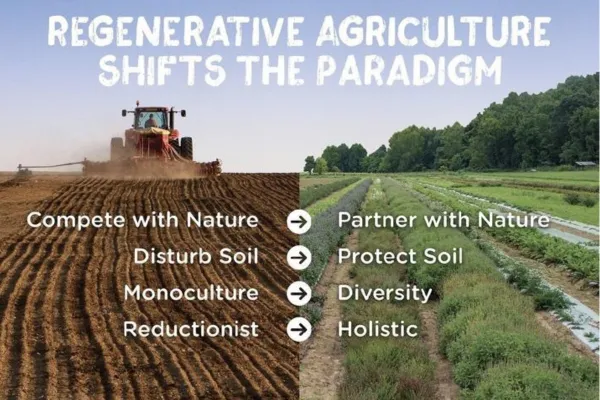
Capturing Carbon for Climate Change is as Close as Under Our Feet
Capturing Carbon for Climate Change is as Close as Under Our Feet
Regenerative agriculture is emerging as a powerful tool in the fight against climate change, with the potential to sequester significant amounts of carbon dioxide (CO₂) in the soil. This approach not only addresses the urgent need to reduce atmospheric carbon but also promotes soil health, biodiversity, and sustainable farming practices.
The Role of Regenerative Agriculture
Regenerative agriculture encompasses a variety of practices aimed at restoring and enhancing the health of agricultural ecosystems. These practices include cover cropping, no-tillage farming, agroforestry, and integrated livestock management. The primary goal is to increase soil organic matter and improve soil structure, which in turn enhances the soil's ability to capture and store carbon.
Carbon Sequestration Potential
Research indicates that regenerative agriculture can significantly increase soil carbon stocks. A comprehensive meta-analysis estimates that cropland sequestration could globally remove approximately 1.5 gigatons of CO₂ per year, or about 55 gigatons over a mid-range saturation period of 35-40 years. This does not even account for additional practices like composting, tree cropping, and biochar application, which could further enhance carbon removal.
Benefits Beyond Carbon Capture
The benefits of regenerative agriculture extend beyond carbon sequestration. By improving soil health, these practices can lead to increased agricultural yields, reduced need for chemical inputs, and enhanced resilience to climate change. For instance, the adoption of cover cropping and no-tillage farming has been shown to improve soil organic matter, which can boost crop yields and reduce the pressure to convert forests into agricultural land.
Practical Implementation and Challenges
While the potential of regenerative agriculture is clear, its implementation on a large scale faces several challenges. One major concern is the perceived trade-off between adopting regenerative practices and maintaining crop yields. However, evidence suggests that regenerative practices can actually enhance yields over time by improving soil health. Moreover, combining multiple regenerative practices, such as cover cropping and no-tillage, can lead to even greater carbon sequestration outcomes.
Policy and Economic Support
To realize the full potential of regenerative agriculture, supportive policies and economic incentives are crucial. Governments and institutions must prioritize regenerative practices in agricultural policies and provide financial support to farmers transitioning to these methods. The European Union's Biodiversity and Farm-to-Fork Strategies are steps in the right direction, but more needs to be done to implement these strategies effectively.
Conclusion
Regenerative agriculture offers a promising solution for capturing carbon and combating climate change. By focusing on soil health and sustainable farming practices, we can harness the natural ability of soils to sequester carbon, thereby mitigating climate change while also enhancing food security and biodiversity. The soil beneath our feet holds the key to a more sustainable and resilient future. References:
"Regenerative Agriculture can play a key role in combating climate change" - One Earth .
"Quantifying soil carbon sequestration from regenerative agricultural practices" - Frontiers in Sustainable Food Systems .
"Regenerative Agriculture: Healthy Soil Best Bet for Carbon Storage" - EASAC .
In my next article, I look to address these issues the residents of New Jersey face regarding the topic discussed and present sound solutions with a game plan backed by my fellow candidates running for Assembly and Senate. To follow our progress, please register for our newsletter.
